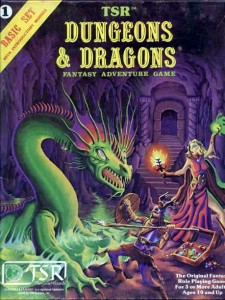 A Dungeon Master’s Tale reminded me that “the dungeon is the mythic underworld; the sprawling underdark manufactured or discovered by the Ancients and now given over entirely to enigmatic and inscrutable things.” I’ve seen that mythic underworld phrase before but it resonated with me this time.
A Dungeon Master’s Tale reminded me that “the dungeon is the mythic underworld; the sprawling underdark manufactured or discovered by the Ancients and now given over entirely to enigmatic and inscrutable things.” I’ve seen that mythic underworld phrase before but it resonated with me this time.
I usually try to make each of my dungeons a themed, well-justified, sensible little environment, where the whole tells a story. That’s a worthy goal, but perhaps there are some things that such a tidy dungeon can’t do. I’d like to run a mythic-underworld game, with dream logic and primal hooks from the subconscious and all that Joseph Campbell stuff.
I started to think how I’d make such a dungeon, and I realized that a bunch of good steps – hostile doors and darkness that thwart PC but not monsters, changing maps so that the dungeon is forever unknown – are all in the original OD&D books. I always balked at them because there was no good explanation for them. How’s this for an explanation: it’s the Mythic Underworld, or, to put it another way, it’s a horror movie down there. Dammit Gary! You beat me to all the cool ideas.
I do think there is a place for the sensible, well-curated dungeon, as opposed to a constant diet of funhouse-dungeon pie. To perhaps overthink it: all underground chambers start as sensible environments, but if left alone they eventually “go bad”: huge monsters spontaneously generate in rooms with tiny doors, strange altars emerge from the rock, passages connect to other dungeons. A complicated labyrinth under a palace might remain under its builders’ control for centuries as long as they patrol each part of it. But woe betide them if they forget about some locked broom closet for a few decades. It might turn into a stairway, leading down…







Your wisdom increases, Grasshopper…